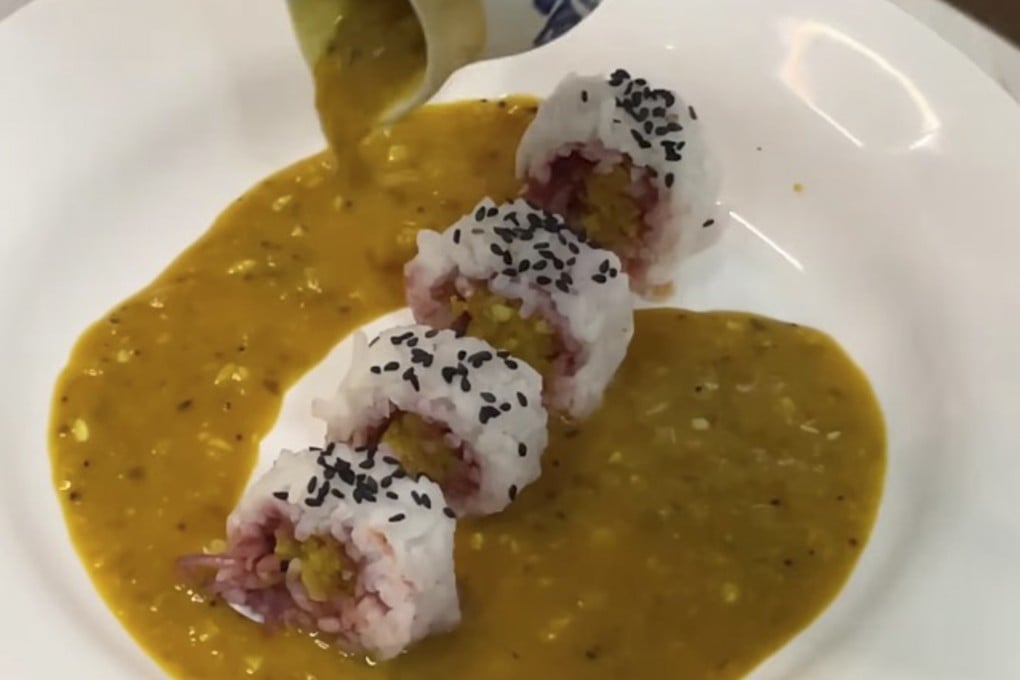‘Indian sushi’ made with butter chicken, cottage cheese, lentils, biryani and more is trending. Are these fusion dishes ‘genius’ or an ‘insult’?
- As sushi surges in popularity in India, chefs’ Indian-influenced takes on it are being served across the country. Instagram videos of fusion versions go viral
- Pakora and masala sushi are just two of the reinventions. While some welcome such dishes, others think they are disrespectful to Japanese and Indian cuisine

When Indian Instagrammer Anushree Bhutada posted a video of dal chawal sushi – a dish she created combining the Indian staple of dal chawal (lentil rice) with a Japanese makizushi roll – on the social media platform in early July, little did she know that it would get over 1.4 million views.
In the video, she can be seen moulding sushi rice with a filling of vegetables, paneer (Indian cottage cheese) and spices before serving it on a bed of dal.
“I recreated the OG comfort food – dal and rice – and turned it into sushi! I know it’s not conventional, but I loved this little creative challenge for myself, and the cherry on top? Got mumma’s approval! Everything – sweetness, spice, and sourness – tasted really good, almost like a hug,” Bhutada wrote as the video’s caption.
Her experiment got lots of comments from viewers. While some thought the invention was an “insult” to Indian and Japanese food, others called it “exciting” and “genius”.
Such strong reactions can perhaps be attributed to the growing interest in the Japanese dish across India.
A recent survey by Indian online food delivery platform Swiggy revealed that sushi orders have increased by nearly 50 per cent across the country since January 2019, with demand growing even in smaller cities.